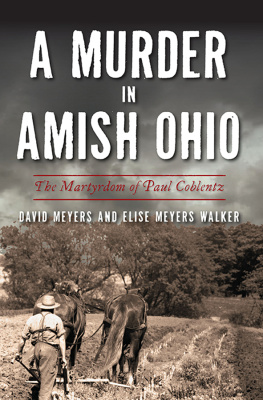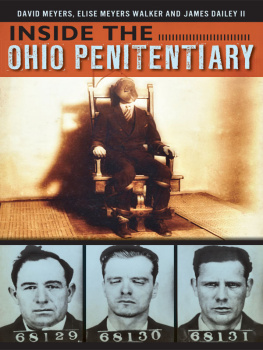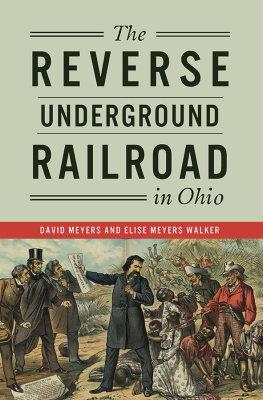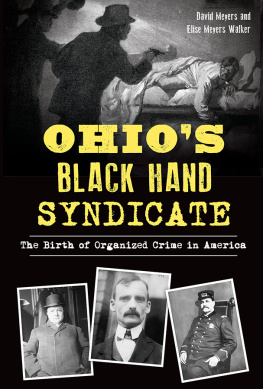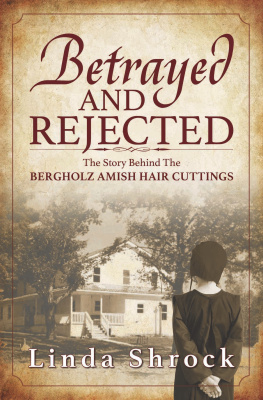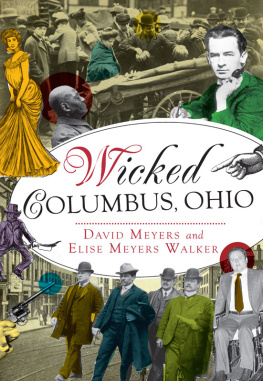


Published by The History Press
Charleston, SC
www.historypress.com
Copyright 2021 by David W. Meyers and Elise Meyers Walker
All rights reserved
First published 2021
e-book edition 2020
ISBN 978.1.43967.216.7
Library of Congress Control Number: 2020948441
print edition ISBN 978.1.46714.753.8
Notice: The information in this book is true and complete to the best of our knowledge. It is offered without guarantee on the part of the authors or The History Press. The authors and The History Press disclaim all liability in connection with the use of this book.
All rights reserved. No part of this book may be reproduced or transmitted in any form whatsoever without prior written permission from the publisher except in the case of brief quotations embodied in critical articles and reviews.
CONTENTS
To Alexia Walker.
For thinking the research her aunt was doingand, by extension, her aunt toois cool.
ACKNOWLEDGEMENTS
While researching this story, we incurred a debt of gratitude to many people, but we would like to specifically recognize the following: Sergeant Maria Stryker, Holmes County Sheriffs Office; Ginnie Sandison, Holmes County Clerk of Courts; Martin Yant, Ace Investigations; Teresa Carstensen, Ohio History Connection; Abraham Hochstetler, AmishAbe.com; Licensed Private Investigator Teresa Edwards; Sheriff Steve Sloan, Stark County, Illinois; Marynell Reardon, Wooster Historical Society; Candace Barnhart and Gwen Uhl, Holmes County Historical Society; Guy Roy Stallman, Holmesville; John Rodrigue, The History Press; Amy Gerber Doerfler; Abraham Hochstetler; Ron Miller; Mary Lou Kunkler; Randy McNutt; Nathan Weaver; Beverly Meyers; and Mike Dumoulin. Each of them contributed in some way to the finished product.
We also would like to thank the Grandview Heights Library, Cleveland Public Library, Library of Congress, Holmes County Clerk of Courts and others as noted for the use of specific images. It is becoming increasingly difficult for authors to obtain good images without paying an arm and a leg for the right to reproduce them. Most of us are simply trying to break even, let alone turn a profit on our books. So we are grateful for those institutions that recognize that fact.
While the Amish use the Luther Bible, which was translated into German from Hebrew and ancient Greek by Martin Luther, all biblical quotes are from the King James version.
INTRODUCTION
Every man must give an account of himself to God, and therefore every man ought to be at liberty to serve God in that way that he can best reconcile to his conscience.
John Leland
In the summer of 1957, a farmer was murdered in Holmes County, Ohio. There was little to distinguish this slaying from hundreds of others that occurred throughout the United States that year except for the ethnicity of the victim. He was Amish. As sensational crimes often do, it opened a window into the private lives of the young man, his family and his communitya community that, in some respects, remains as enigmatic today as it was more than half a century ago.
For many Americans, the Amish murder was a revelation. Unless they lived in rural parts of Ohio, Pennsylvania, Indiana or a few other states, they may not have had any exposure to these peculiar people with their plain manner of dress and their simple lifestyle. Even if they did, it was unlikely they knew them well. The Amish tend to keep to their own kind, having intentionally withdrawn from the larger societyfrom the world. At least, they try. But sometimes the world wont be denied.
For years, Lancaster County, Pennsylvania, has been known as the heart of Pennsylvania Dutch countryPennsylvania Dutch being a shorthand term for the descendants of early German-speaking immigrants. This included such religious groups as Lutheran, German Reformed, Moravian, Schwarzenau Brethren (Dunkards), Mennonite and Amish. After National Geographic magazine published an article about the region in 1938, many East Coast city-dwellers were prompted to make an occasional excursion there. And by 1955, roughly twenty-five thousand people per year were visiting Lancaster County. Sixty-five years later, that number tops 8 million.
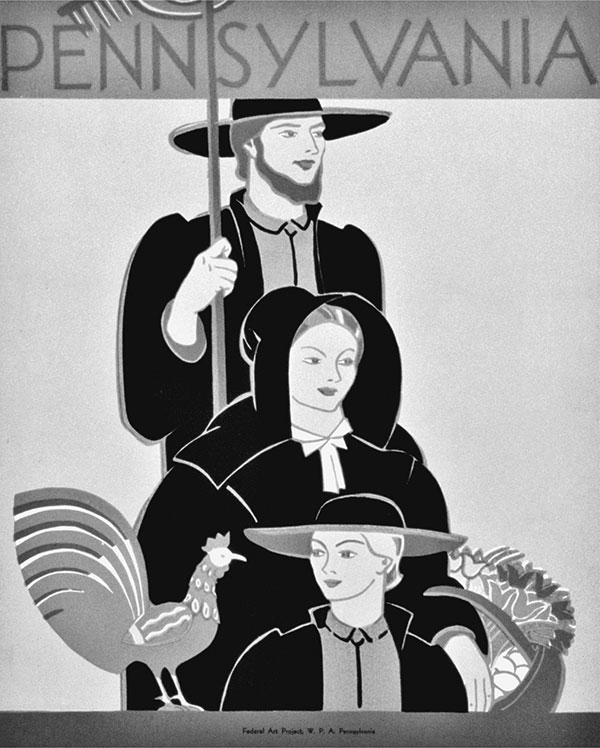
One of a series of WPA posters that promoted Pennsylvania tourism. Library of Congress.
Holmes County, Ohio, by contrast, had virtually no tourism to speak of back then and continues to lag well behind Lancaster County. Despite being the locus of the largest Amish settlement in the world, it has about half as many visitors. As sociologist Donald Kraybill observed, In 1957, Amish-themed tourism was still in its infancy and few Americans even knew of the Amish, let alone anything about their culture and beliefs, so journalists arriving in rural Holmes County struggled to interpret the story for their readers.
For many, reader and reporter alike, it might as well have been a foreign country. Different customs, different lifestyle, different manner of dress and even a different language: Pennsylvania German. It was like stepping back in time. But what they found particularly puzzling was that the Amish expressed no hatred toward the killers and no desire for retribution. To quote one Amish man, We do not engage in revenge; that is for God.
Incredibly, the Amish seemed to be as concerned about helping the perpetrators and their families get through the sad ordeal as they were the victims family and themselves. So they prayed for them, hoping that God would forgive their sins. And they reached out to them, inviting the parents of the killers into their homes and visiting the murderer in prison, before returning to the privacy of their own families and community.
There was a similar reaction nearly fifty years later when ten Amish girls between the ages of six and thirteen were gunned down on October 2, 2006, at a schoolhouse in Nickel Mines, Pennsylvania. Five of the victims died, and five others were wounded when a local milk truck driver barged into their one-room school and shot the children in cold blood. The world was horrified and then astoundedhorrified by the senseless slaughter of innocent little girls and astounded that the Amish community again responded not with anger, but forgiveness.
Although grief-stricken by their loss, the Amish reached out to the family of the gunman, recognizing that his widow and children were grieving, too, and were victims as well. The Amish community would have willingly cooperated with the judicial system only to the extent necessary to allow it to carry out its function, just as they had back in 1957. However, in 2006, there was no trial because the shooter took his own life. A half century before, there were twoboth for murder.
According to Howard Goeringer, a specialist in nonviolence, Amish culture is embedded in the German word Gelassenheit. It means submission, self-surrender, yielding humbly to the sovereignty of God and trusting in the Holy Ones power to deliver His children from evil and death. For the most part, they do not look to the court system for redress, although they are appreciative of the governments efforts to keep them safe.
Next page
